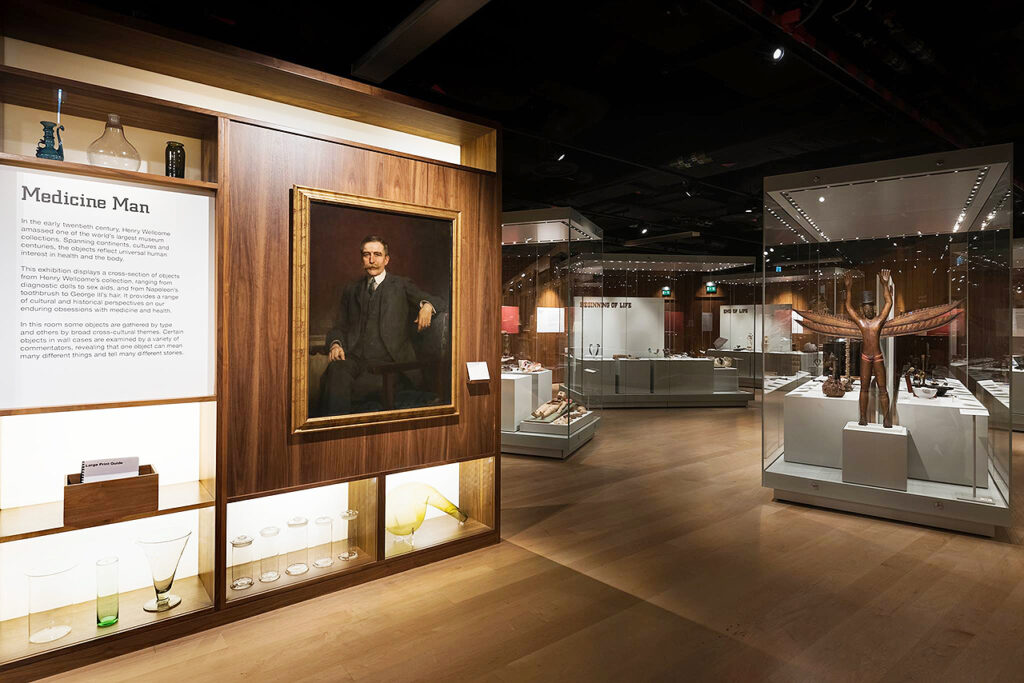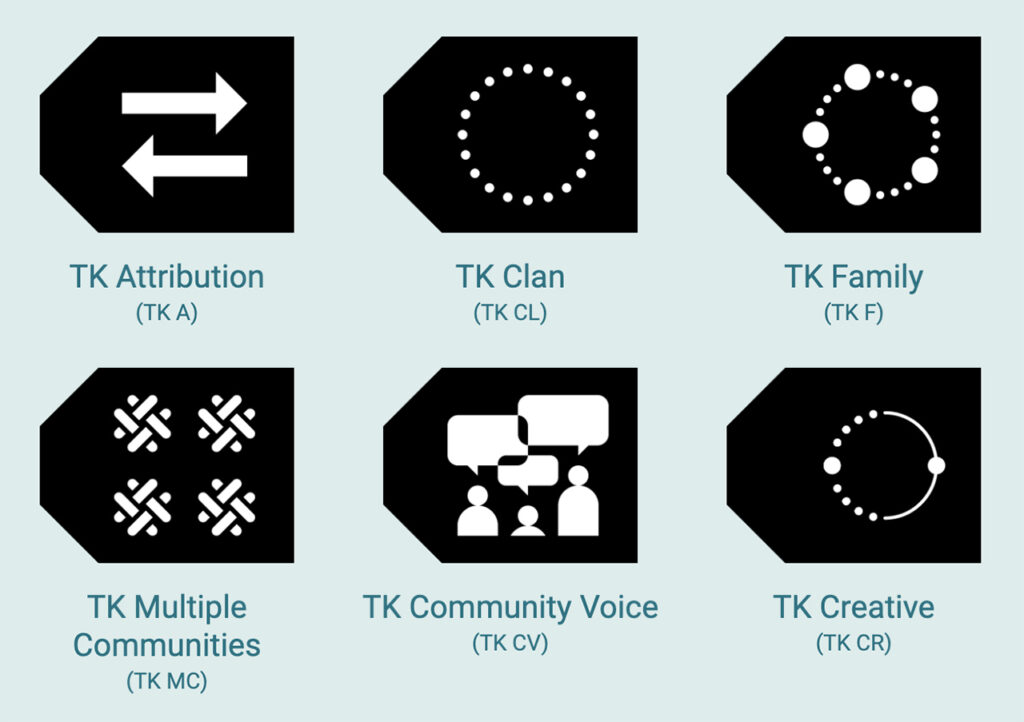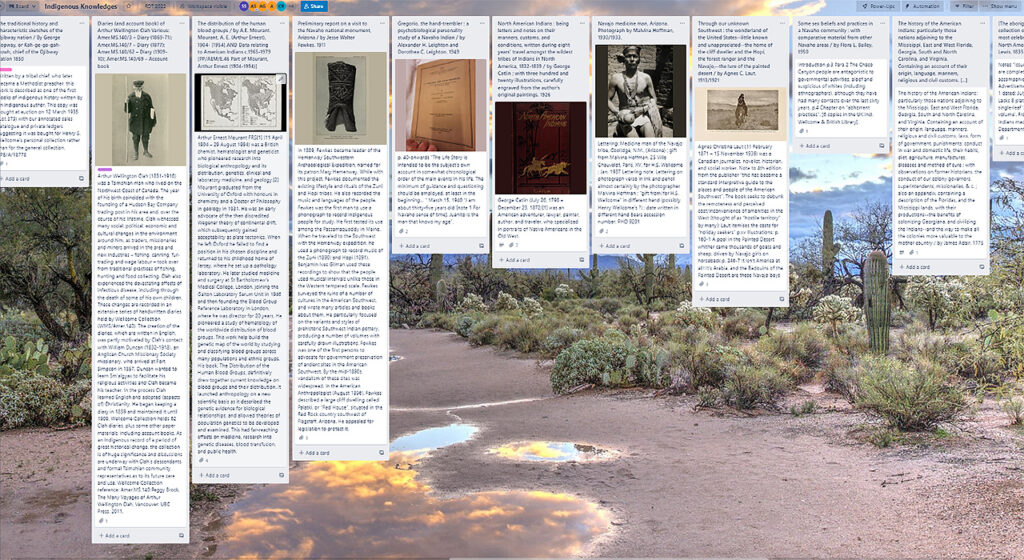For at least a year, Wellcome Collection has been reckoning with its roots. As it emphasized in a 2021 post, the London-based museum and library is awake to its colonial legacy, having been established in the early 20th century by pharmaceutical entrepreneur Sir Henry Wellcome to tell “a global story of health and medicine” that nonetheless marginalized and exoticized peoples of color. In its holdings are objects that were unjustly extracted from source communities and thus divorced of context, or items that have been gathered to privilege an Eurocentric history of medicine — one in which Indigenous and local voices have been “silenced, erased, and ignored.”
And so the institution has embarked on a vast exercise to diversify and decolonize its collection, a vital initiative of which is Indigenous Knowledges. Launched in April, the year-long pilot project endeavors to connect Wellcome Collection’s objects and archives with Indigenous source communities by tapping digital tools. “We know that some of the material we have in the collection could be of significant interest to Indigenous or First Nations people around the world,” Angela Saward, Research Development Specialist at Wellcome Collection, says of the project. “It’s an opportunity for us to spend a year in conversation and to broker meaningful relationships in an equitable way.”

Established in the early 20th century by Sir Henry Wellcome, the museum has recognized its colonial legacy in telling “a global story of health and medicine in which Black people, Indigenous peoples and people of color were exoticized, marginalized, and exploited.” Image: Wellcome Collection on Facebook
In this, Indigenous Knowledges has partners not limited to the Centre for Indigenous and Settler Colonial Studies at the University of Kent, the Kinyaa’áanii Charlie Benally Library at Diné College, and the South West Center, University of Arizona. But a key collaborator here is Local Contexts, an organization that advances and supports Indigenous communities in managing their intellectual property and cultural heritage in the digital realm. Their tools are digital labels and notices, field-tested and designed to be attached to cultural data, which identify community-specific interests and responsibilities in the use and access of traditional material.
Wellcome Collection is likewise eying such digital integrations. “Indigenous communities are represented in enormous collections and data in libraries and museums, but often there’s a lot of information that’s missed out [like] provenance,” says Sophie Schneider, Graduate Trainee in the museum’s Research Development Team. “So we’re working with Local Contexts to figure out how we can incorporate those digital tools within our catalog.”

A selection of Traditional Knowledge digital labels developed by Local Contexts to clarify provenance and primary cultural authority for specific material. Image: Local Contexts
She’s not wrong: Indigenous cultural and often sacred material fills the collections of institutions from the Smithsonian to the British Museum, not all of which have been mindfully or sensitively handled. Hence, the American Indian Repatriation Movement of the 1960s, which eventually occasioned the Protocols for Native American Archival Materials, guidelines adopted in 2006 that clarified how Native articles should be cared for by institutions. But the advent of digital has only added ethical complexities to the matter: what does it mean for Indigenous tribes to exercise their sovereignty in the virtual sphere?
A helpful response was broached by the Library of Congress’ Ancestral Voices, which implements a form of digital restitution by inviting the Passamaquoddy, in this case, to authorize which and how tribal material in the institution’s holdings should be handled and accessed. Indigenous Knowledges travels that same road and with the same partner, Local Contexts, whose Co-Director Jane Anderson, on the occasion of Ancestral Voices, plainly put it, “We’re reimagining who actually should have the authority.”

To engage its offsite partners, the Indigenous Knowledges team has used Trello as a visual storyboard to array its collected material. Image: Wellcome Collection
But first, there are dialogues to be had. Though in its early stages, Indigenous Knowledges has already convened its first in-person showcase and design sprint. With these, it’s gathered team members and partners to not just explore how Wellcome’s array of material — spanning manuscripts, films, posters, and maps — might be reactivated with diverse perspectives, but to sketch out how Local Contexts’ digital infrastructure might be integrated into the museum’s catalog. Along the way, other digital tools are facilitating these conversations: the showcase, for instance, deployed Trello and a visualizer to reach offsite participants.
As well, the project team has put out notices to collaborate signaling its intent to build relationships with Indigenous communities and spearheaded a digital residency, in collaboration with its academic partners and guided by Indigenous knowledge systems. The pilot will culminate in an online symposium to share the team’s findings, though Saward also sees how a broader “business case” could be made off the initiative. “It’s quite a small-scale project,” she says, “but it’s got very big ambitions.”
Certainly, while repatriation is not the goal here, the establishment of a reciprocal connection with Indigenous communities to recognize and center their rights (per the Protocols) goes some way toward creating impact across Wellcome’s collection. If the ultimate aim is to honor tribal cultures and dignity in the digital sphere, Indigenous Knowledges makes for a well-considered if initial step. “Essentially, we want to lay the groundwork by forming sustainable and collaborative relationships,” Schneider emphasizes. “We want to value different types of knowledge.”



